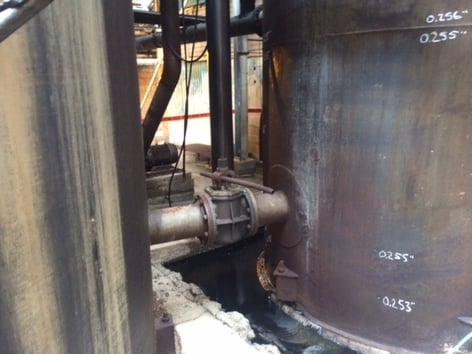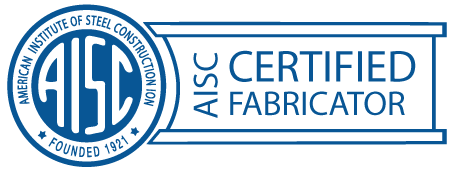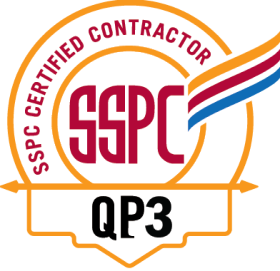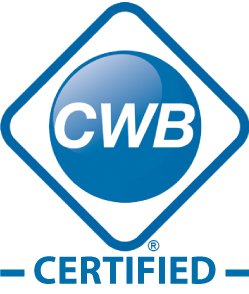If you own above-ground storage tanks, then you know the responsibility of inspecting them after they are placed in service to maintain their integrity. A robust inspection and storage tank maintenance program will prevent leaks, preserve your asset, and avoid costly repair and environmental damage.
The API 653 Inspection
Aboveground storage tanks that are built to the American Petroleum Institute (API) 650 standard are required to have periodic API 653 tank inspections. For inspection and repair, API 653 is based on the principles of API 650, but it may be applied to any steel tank constructed to a tank specification.
In some instances, state or local statutes may require more stringent requirements. Knowledge of such regulations is necessary to ensure compliance with scheduling and inspection requirements.
An API 653 standard tank inspection applies to the foundation, bottom, shell, structure, roof, attached appurtenances, and nozzles to the face of the first flange, first threaded joint or first welding-end connection from the tank.

API 653 Tank Inspection Checklist
To ensure compliance with API 653 standards, bulk storage tank owners must follow a structured inspection checklist. Below is a step-by-step breakdown of key areas evaluated during an tank inspection API 653:
1. External Visual Inspection Checklist
- Inspect the tank shell for signs of corrosion, pitting, bulging, and leaks.
- Check for coating or paint degradation.
- Examine nozzles, valves, and piping for leaks or misalignment.
- Ensure the secondary containment system is free from product accumulation.
2. Internal Inspection Checklist
- Visually inspect the tank floor, shell, and roof for cracks, corrosion, and coating deterioration.
- Conduct vacuum box testing to check weld integrity.
- Perform ultrasonic thickness (UT) testing to measure material loss.
- Ensure internal components like floating roofs, support structures, and liners are intact.
3. Foundation and Support Structure Checklist
- Inspect the tank foundation for settlement, cracks, or erosion.
- Check for tilting or structural misalignment.
- Conduct a settlement survey to evaluate foundation stability.
4. Corrosion and Thickness Measurement Checklist
- Perform ultrasonic thickness testing (UT) to compare material thickness with original specifications.
- Use magnetic particle testing (MT) for detecting cracks in welds.
- Conduct a magnetic flux leakage (MFL) examination to assess tank bottom corrosion.
API 653 vs. API 650 – What’s the Difference?
Many people confuse API 650 and API 653, but these two standards serve very different purposes. Understanding the distinction is crucial for ensuring compliance and proper maintenance of aboveground storage tanks.
| Standard | Purpose | Applies To | Key Focus Areas |
|---|---|---|---|
| API 650 | Design & construction | New aboveground storage tanks | Welding, materials, fabrication, seismic design, and structural integrity |
| API 653 | Inspection & repair | Existing aboveground storage tanks built to API 650 or other specifications | Corrosion assessment, repairs, alterations, minimum thickness requirements, and inspection intervals |
API 650 governs the design and construction of new tanks, ensuring they are built to withstand operational and environmental stresses. API 653, on the other hand, applies to tanks already in service, focusing on ongoing inspection, repairs, and compliance to maintain structural integrity over time.
If your tank was built following API 650, it must also adhere to API 653 for periodic inspections and repairs. Staying compliant with both standards is essential for safety, regulatory compliance, and preventing costly failures.
How Often Must You Inspect Your Aboveground Storage Tank?
Several factors must be considered to determine inspection frequency for storage tanks. The complete list of factors is listed in API 653, 6.2.1, which includes: jurisdictional requirements, the nature of the product stored, corrosion allowances and prevention systems, results of visual maintenance checks, and changes in operation modes - to name a few.
As a general rule, inspection intervals are as follows:
- Every month a Routine In-Service Inspection must be performed where the external condition of the tank must be monitored visually by personnel knowledgeable of the facility, the tank, and the characteristics of the product stored.
- Staining: Conduct monthly visual inspection of the aboveground storage tank looking for staining indicating leaks. Check spill collection points and the secondary containment to ensure there is no product within them.
- Valves: Visually inspect valves and associated piping for leaks, cracks or corrosion.
- Foundation: Visually inspect the foundation for deterioration, wash-out, settling, leaks, or other changes in conditions since the last inspection. Tanks change over a period of time so it is important to record observations to help establish a pattern.
- Type and Quantity: Keep all records of what type and quantity of product has been stored in the tank.
- Internal: Open the tank roof access every couple of years to perform a visual inspection, looking for corrosion, condition of coatings, and internal components.
- Every 5 years an in-service External Inspection is required. This inspection includes an Ultrasonic Thickness Inspection of the shell.
- 10 years after the initial in-service date an Internal Inspection must be performed unless the tank has safeguards listed in API 653 Table 6.1, which extends this initial interval.
- Subsequent Internal Inspection intervals shall be determined based on data from the last Internal Inspection and API 653 procedures to determine corrosion rates or Risk Based Inspection (RBI) assessment.
In anticipation of the Internal Inspection, you should have the tank interior completely cleaned to help facilitate the inspection of the tank’s internal components and structure. This means complete removal of any product, water, and debris.
Other Types of Tank Inspections Include:
Regulatory Compliance & Industry Requirements
API 653 inspections are not just about maintaining tank integrity—they are also essential for regulatory compliance. Various federal and state agencies mandate regular inspections to protect the environment, ensure workplace safety, and prevent catastrophic failures.
Key Regulatory Bodies Governing API 653 Inspections:
- Environmental Protection Agency (EPA) - Enforces the Spill Prevention, Control, and Countermeasure (SPCC) rule, requiring aboveground storage tanks to be inspected and maintained to prevent spills that could contaminate water sources.
- Occupational Safety and Health Administration (OSHA) – Mandates that aboveground storage tanks meet safety standards to protect workers from hazards related to flammable materials, confined space entry, and structural failures.
- Local and State Regulations – Many states have additional inspection and reporting requirements beyond API 653, including stricter secondary containment, leak detection, and corrosion prevention mandates.
Industry-Specific API 653 Compliance Requirements
Different industries have unique storage tank requirements based on stored materials, operational conditions, and risk factors:
| Industry | Compliance Considerations |
|---|---|
| Oil & Gas | Tanks must meet API 653 & SPCC standards to prevent spills, comply with fire safety regulations, and ensure operational efficiency. |
| Water Storage | Water tanks must be regularly inspected for contamination, structural integrity, and coating deterioration to meet public health standards. |
| Chemical Storage | Inspections focus on corrosion protection, hazardous material containment, and emergency response preparedness. |
| Fire Protection (Fire Water Tanks) |
Tanks used for fire suppression must comply with NFPA 22 and API 653, ensuring they function properly in an emergency. |
Why Compliance Matters
Failure to adhere to API 653 and industry regulations can result in:
- Hefty fines from regulatory agencies for non-compliance.
- Environmental damage leading to legal liabilities and cleanup costs.
- Increased risk of structural failures, resulting in costly repairs or tank replacements.
- Potential shutdowns or loss of operational permits, impacting business continuity.
By staying compliant with API 653 and regulatory standards, companies can avoid penalties, extend tank lifespan, and protect people and the environment.
The Internal Inspection requires an Authorized API 653 Inspector
The API 653 Internal Inspection must be performed by an Authorized API 653 Inspector. It is comprised of different parts, and the Inspector will review records and checklists of previous inspections that have been completed since installation.
They then perform internal & external visual inspections, ultrasonic thickness testing (UT), vacuum box testing of floor plate lap welds & chine welds, tank bottom examination, and a settlement survey. Let’s explore each part of the inspection a little closer:
- Reporting & Checklists - The API Inspector will review all prior API 653 reports which will help them identify potential problems. A collection of these reports will help build a picture of the aboveground storage tank’s health throughout its existence. The owner should provide monthly inspection reports for this review as well.
- Internal & External Inspection - The API Inspector has a checklist they consult while performing this inspection. The list includes, but is not limited to, visual testing (VT) inspection of the tank’s foundation & secondary containment, internal & external shell, welds, plates, and appurtenances. Insulated aboveground storage tanks will need to have insulation removed only to the extent necessary to determine the condition of the tank exterior. To prevent the tank from being frequently taken out of service for internal inspection a risk-based inspection program can be implemented.
- Ultrasonic Thickness Testing (UT) - This testing is performed by an ASNT Level II Certified UT inspector to measure the tank material thickness as it compares to the original thickness to ensure the minimum required for the shell, floor, roof, and nozzles.
Vacuum Box Testing - Also called bubble leak testing, vacuum box testing is performed to establish the condition of a tank's bottom plate welds and shell-to-bottom welds. In some cases, if the floor has a lining on the bottom this portion of the inspection can be waived. - Magnetic Particle Testing (MT) Inspection - This inspection is used to locate open-to-surface and near-surface cracks in welds that cannot be readily seen. This is typically performed at nozzle penetrations or any areas of concern discovered during UT or VT inspection.
- Tank Bottom Examination – The use of equipment to scan large portions of the aboveground storage tank bottom to detect corrosion (particularly on the underside). A common method used is the Magnetic Flux Leakage (MFL) examination.
- Settlement Survey - This part of the inspection is to evaluate the foundation and examine if the tank is tilting or sitting on the foundation incorrectly. It evaluates all sides of the tank with laser measuring equipment to ensure it is level. Over time the tank can settle and the shell can lead to out-of-roundness which may impede the proper functioning of an internal floating roof. It may also affect the roof support structure such as columns, rafters, and girders. This type of settlement could affect tank nozzles and piping as well.
The Inspection Report
After the inspection is complete the Inspector provides a final inspection report containing collected tank data and conclusions as to whether the tank meets the API 650 specifications.
This report will also include required repairs as well as recommendations for any suggested repairs prior to returning the tank into service.
Common items noted on the report as failures or potential failures include tank shell plates of reduced thickness, improper methods used to construct or maintain the tank, lack of full weld penetration or weld fusion, improper weld seam spacing, improper nozzle spacing, and other potential conditions not meeting API specifications and procedures.
Related Article: Storage Tank Maintenance Checklist
Should Your Inspection Contractor Also Be Your Repair Contractor?
T BAILEY LLC believes that the company performing the API 653 inspector and the company performing the repairs should be different in order to remove the appearance of any actual conflict of interest. While we employ API 653 Inspectors, we do so to ensure a proper understanding of code-required repairs.
This expertise, coupled with our vast experience in fabrication, repair, and tank construction, ensures that when you choose T BAILEY LLC to perform your tank repairs, you get the best possible results.
Remember, there are risks and you have the ultimate responsibility as the owner of aboveground storage tanks. If you would like help mitigating those risks, we at T BAILEY LLC are here to assist you.







